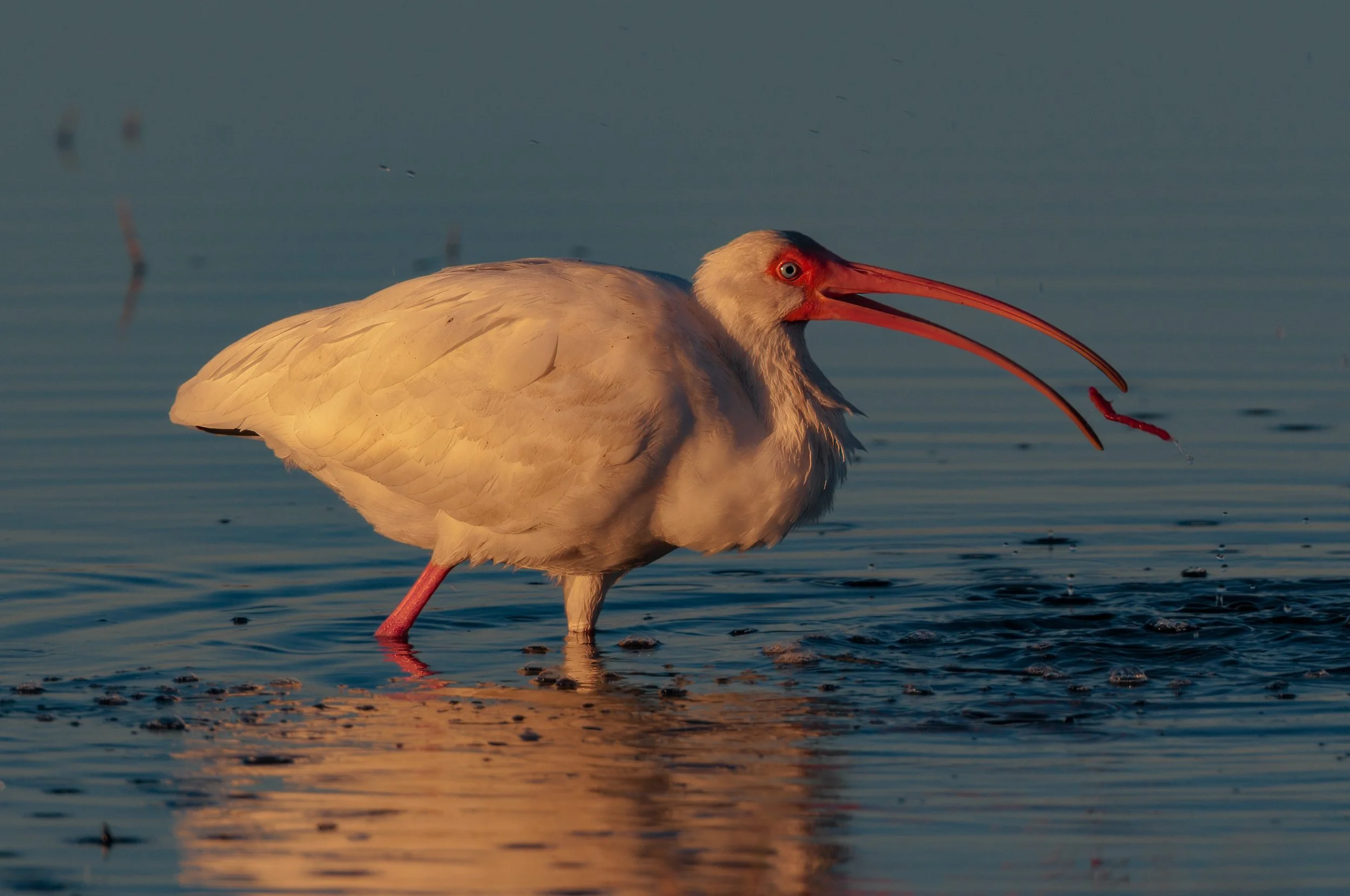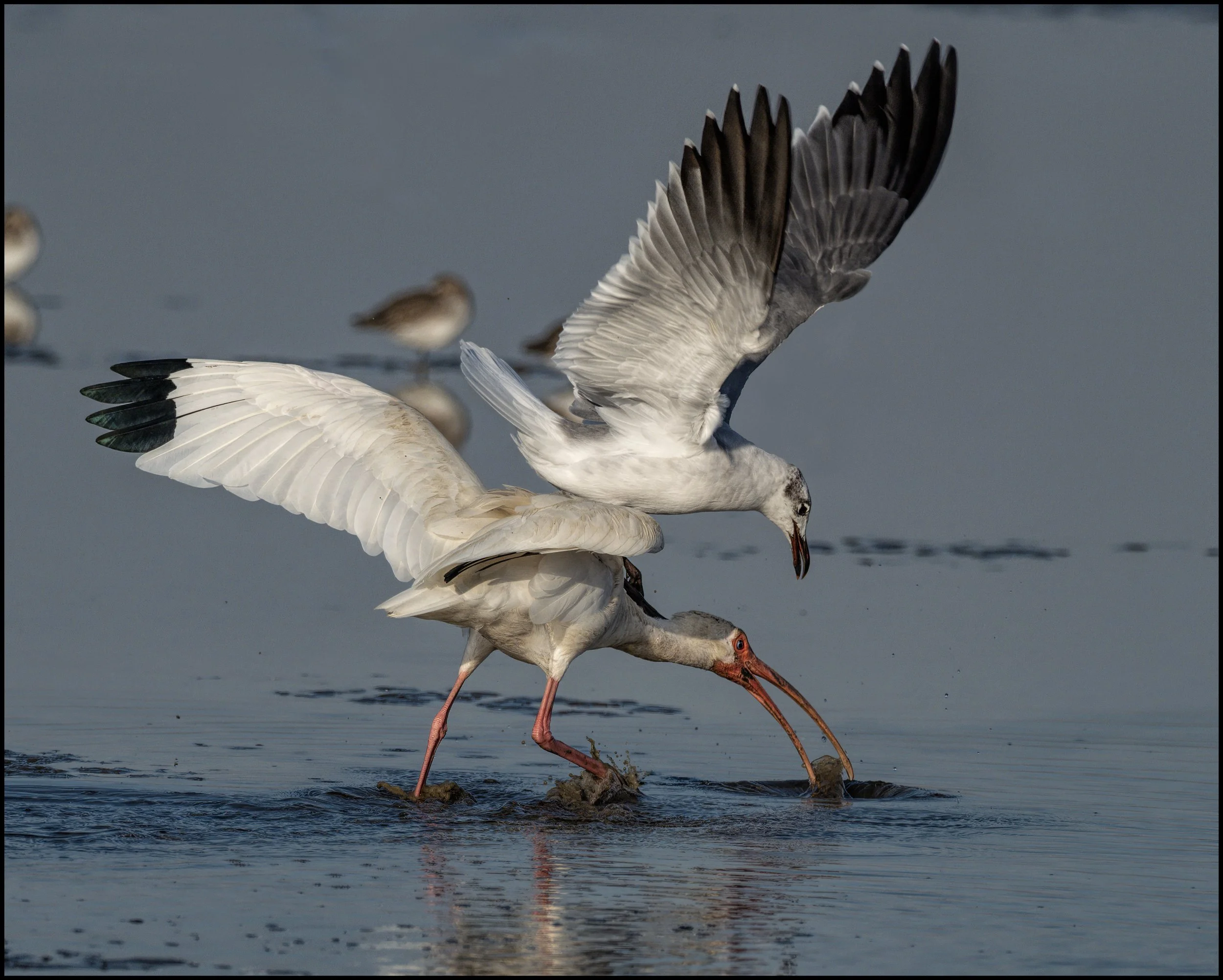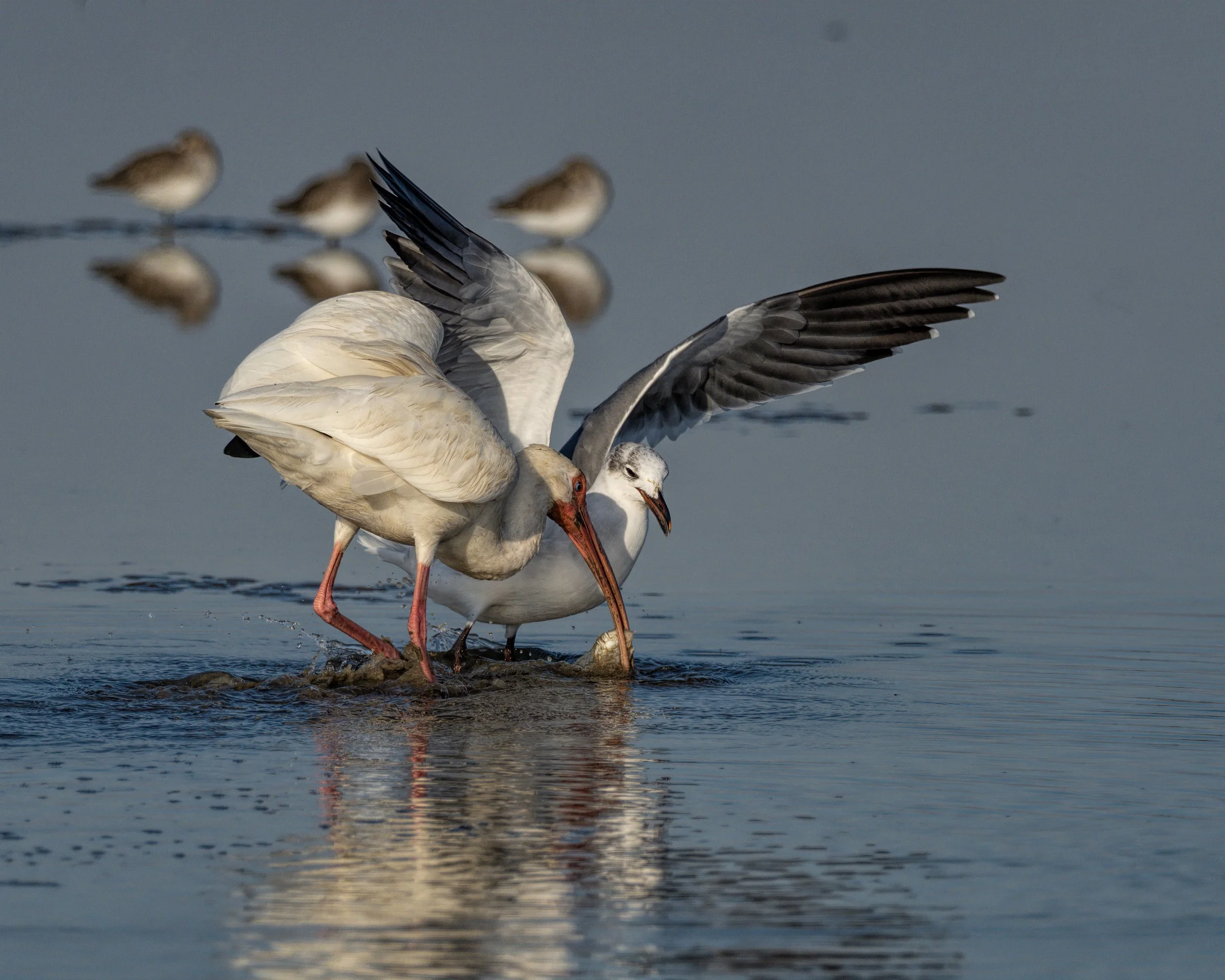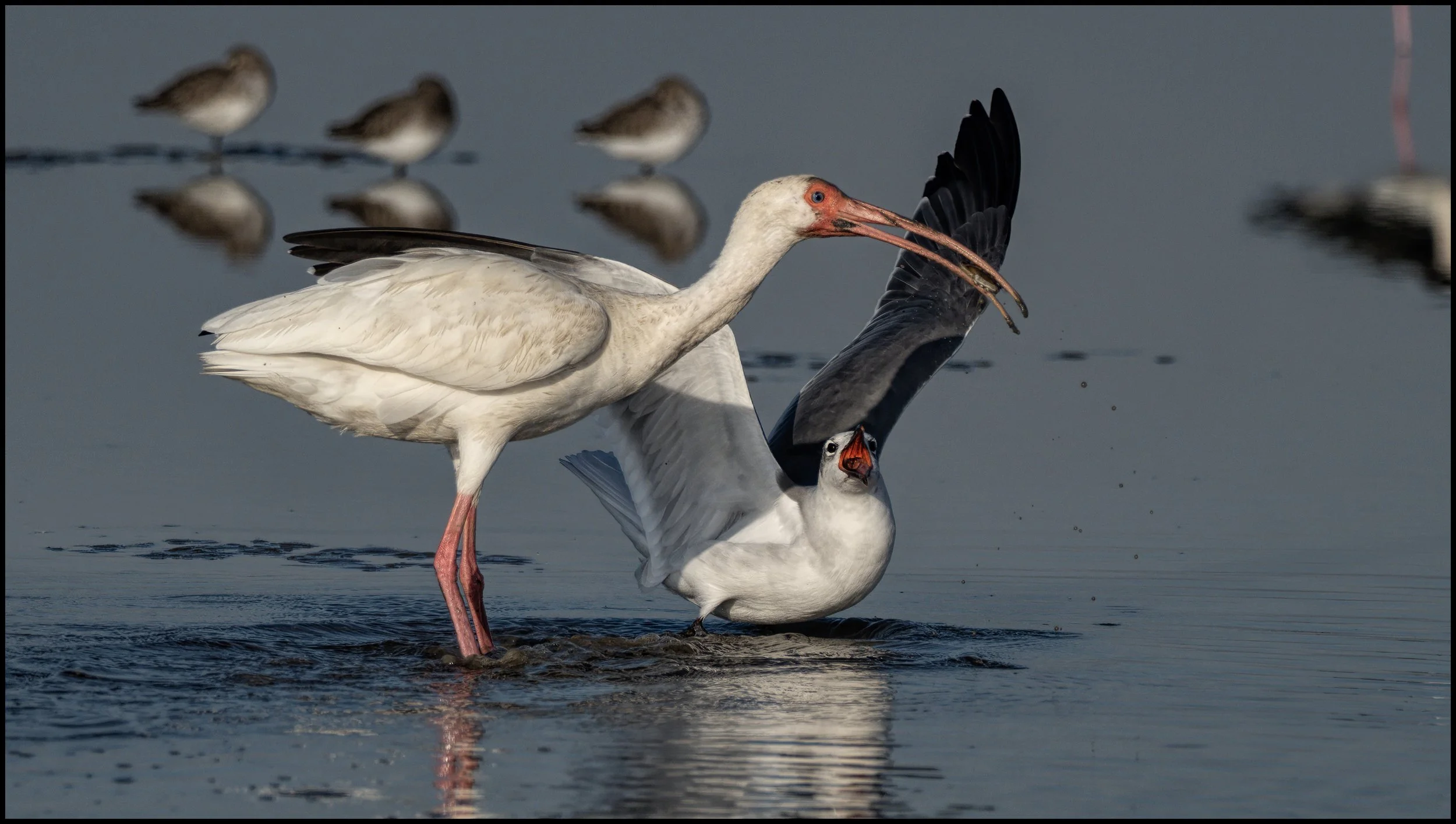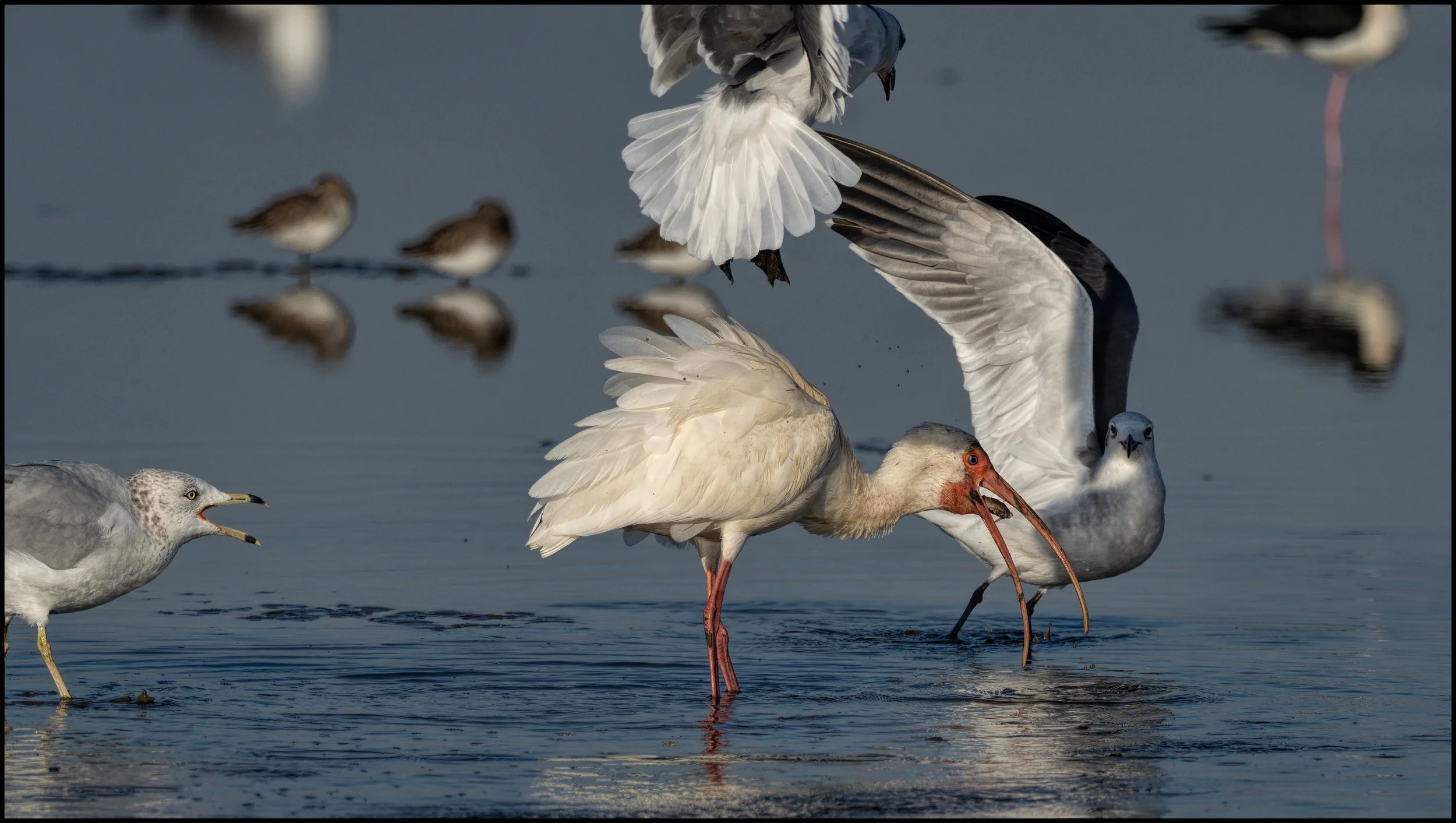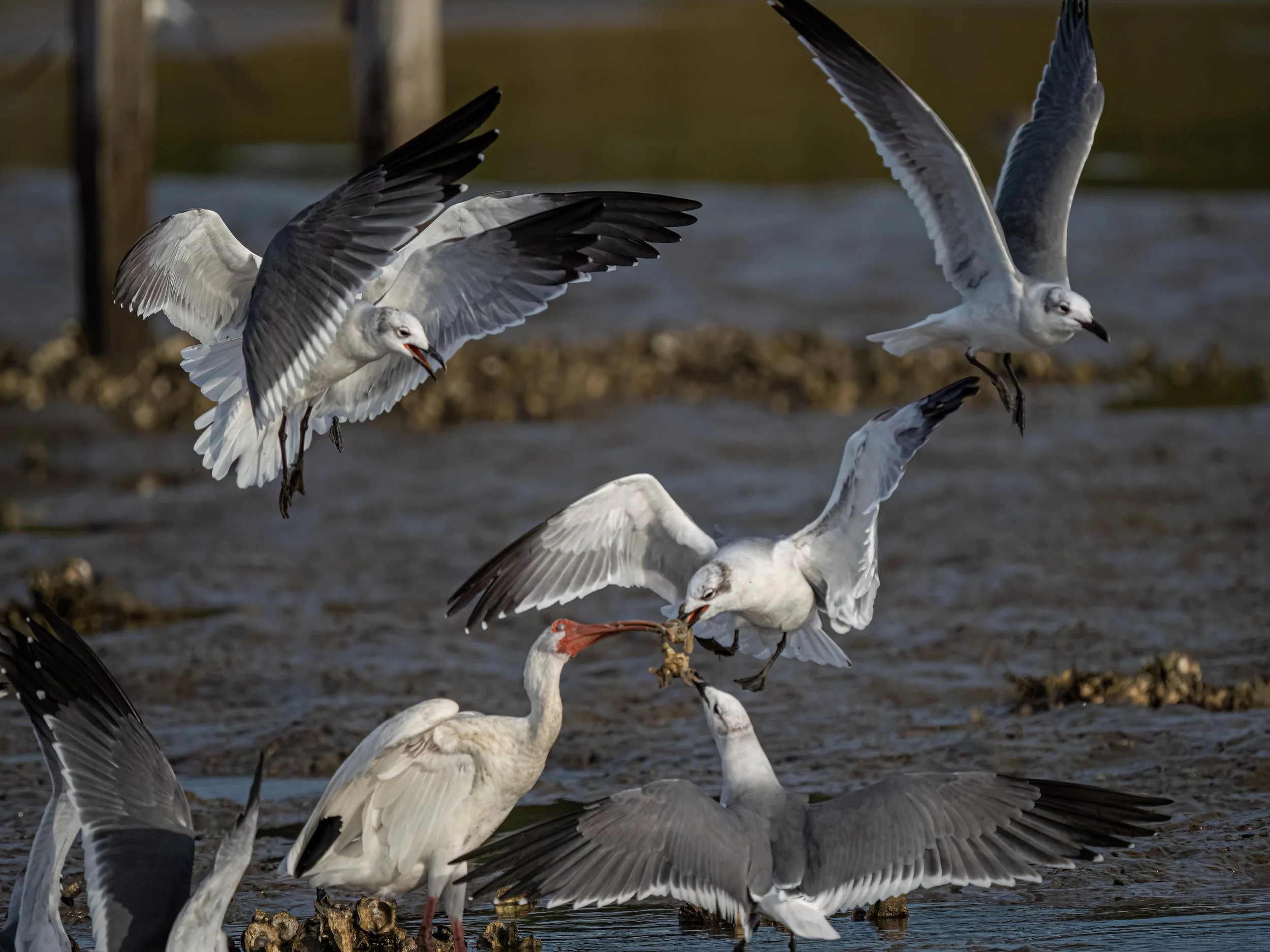White Ibis feeding.
/Our photos are supposed to tell a story. The photo below tells a story about a White Ibis feeding in early morning light.
The remaining photos tell a story about the competition for the available food the White Ibis often encounters.
The first photo was taken in February 2014 with a Nikon D300S camera and a 500mm f/4 lens with a 1.4x tc at the Bolivar Peninsula north jetty in Texas. The remaining photos were taken at the same location in November 2019 with an Olympus E-M1X camera and a 300mm f/4 lens with a 1.4x teleconverter.
